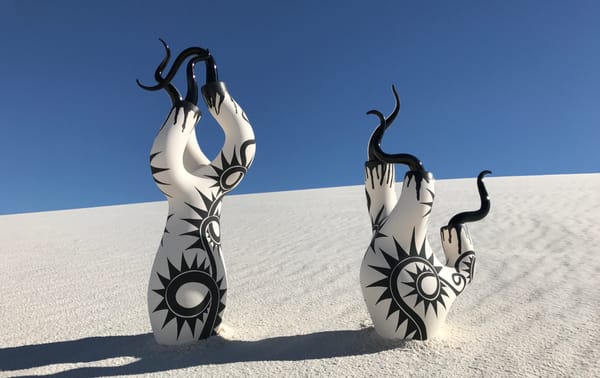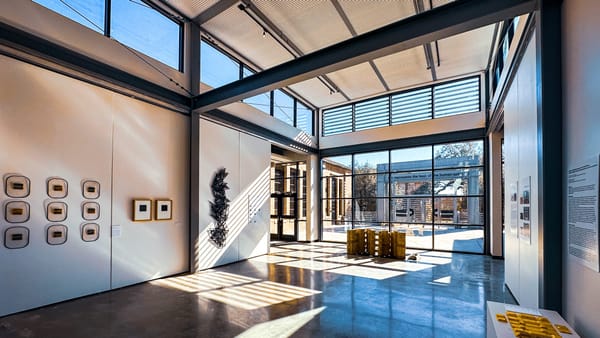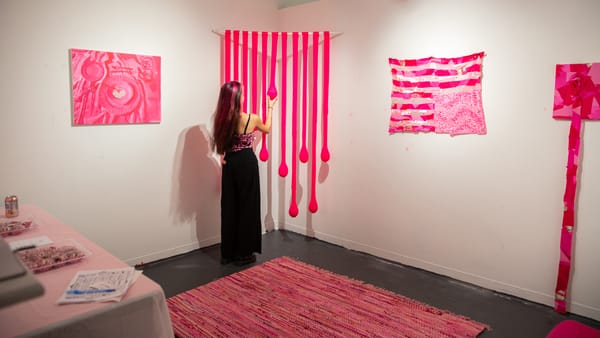At British Museum, a Promising But Flawed Start to Grappling With Colonialism
“Empire and Collecting,” a new self-guided tour, reflects an attempt to help visitors understand the colonial origins of the collection.
LONDON — Can public museums ever be decolonized? Is there a way to honestly showcase the often violent provenance of many collections in a space originally designed as a site for colonial science and codification?
These are the sorts of questions that should be considered when confronting “Empire and Collecting,” a new permanent collection “trail” at the British Museum. Comprising 15 artefacts selected to highlight “the different, complex and sometimes controversial journeys of objects that would become part of the Museum collection,” the signposted self-guided tour is the museum’s response to a wider public debate about how to highlight the country’s colonial past through a non-imperialist lens.

Not all of the Museum’s possessions were acquired as loot, of course. But many were — both directly, such as those seized by European troops, and indirectly like the artefacts “discovered” and claimed by the Western archeologists and anthropologists that followed in their wake. Ideally, contextualizing these artefacts would involve explicitly discussing what “consent” and “duress” means regarding transactions between the colonizer and the colonized.The trail never manages to achieve this, though it does make a lot of progress in highlighting Indigenous agency. While many of those who made the acquisitions discussed in the new labels hail from a familiar cast of rich, white colonial administrators, a few Indigenous intermediaries like the Ogoga of Ikere also appear. The Nigerian ruler is part of the story behind the “Palace door and lintel” (c.1910–1914) by Olowe of Ise — a rare example of a non-Western artefact obtained in exchange for a European one.
Kalibari chiefs and merchants also play a key role in another African artefact on the trail, an ancestral screen from Nigeria (19th century), though there are frustrating omissions. The provided text passively describes how the ritual screens were entrusted to a British colonial officer in 1916 to protect them from the idol-smashing Christian fundamentalist movement of Garrick Braide. But it does little to answer the questions lurking beneath the surface, concerning the ripple effects of British colonization and how the resulting influx of Christian missionaries upended the existing socio-cultural power structure of Nigeria.

Likewise, the tone of many of the new labels (which are at most a few paragraphs long) is more exculpatory than analytical, which becomes increasingly obvious as one notes the number of highly contested objects omitted, like the Parthenon Marbles or the Benin Bronzes. The information about the “Exekias Amphora” (c.540–530 BC), for example, exclusively focuses on its purchase from a posthumous Parisian auction of art owned by the 18th-century French diplomat Edmé-Antoine Durand. Similarly, the label for the “Nereid monument” (c.390–380 BC) focuses on the legal permissions sought by British archaeologist Charles Fellows for its export from Turkey. In both cases, the labels seek to establish that both artefacts were lawfully acquired.
It is ironic, then, that recent pandemic restrictions (which have redirected foot traffic) require visitors to pass the controversial Parthenon marbles to see both objects. Since 1832 the Greek government has repeatedly called for their repatriation, and the legality of the paperwork behind their removal from Athens remains highly dubious.
The contradictions of the trail narrative vis-a-vis surrounding objects is emphasized elsewhere in the galleries. The acquisition of a military tunic from Sudan is justified as a legitimate “spoil of war” after the 1898 battle of Atbara during the Second Sudan War. Needles to say, reading these explanations in the same room that houses the bronzes looted from Benin city in 1897 by a marauding British military force makes for a strange experience.

The most bizarre artefact included is one that is no longer in the UK:; the Kwakwaka’wakw First Nations Potlatch mask, which has been on a long-term loan to the U’mista Cultural Centre in Canada since 2005 and is thus represented by an empty case. Such loans have been a common response of British museums facing demands for permanent repatriation. The label is frank about the original violent acquisition of the mask, which was confiscated during a 1921 potlatch along with 400 similar artefacts by Canadian authorities. Yet, once again, it does little to flesh out the wider picture behind its seizure, and gives the impression that this was a disconnected moment of brutality rather than part of a systemic agenda of forcible assimilation which saw the Canadian government break up First Nations family groups along with their traditional gatherings.
These patterns of violence are critical to understanding any history of colonialism, but unearthing them requires more than just showcasing the overt impact of imperialism. The insidious nature of colonialism was that its brutality manifested in more lasting ways than military violence. As it stands, however, the wording of many of the new display labels precludes any public understanding of this unless their viewers have some prior education about colonial practices. More than what is left unsaid, the “neutral” language utilized by the museum in its new labels presents threads of violence without hinting at the whole tapestry of imperial brutality.

For example, the label for the Egyptian statue of Ankhrenepnefer spares one sentence to describe the 1882 bombardment of Alexandria by the British navy (a prelude to gaining de facto full control over Egypt) and devotes the remainder of its three paragraphs to British exploration and excavation that commenced “that same year” without drawing an explicit connection between the two. The label concerning an Akan drum, believed to have been brought from West Africa to North America on a slave ship, likewise mentions the “horrendous conditions” on ships plying the Middle Passage, but avoids directly naming who was responsible for said conditions.
The label for another object on the trail, a circa 18th century Aboriginal bark shield from Australia, has proven to be more controversial. The Gweagol shield (as the artefact is also known) has been the subject of repatriation demands by the Aboriginal activist Rodney Kelly, a descendent of the Gweagol warrior Cooman killed by the infamous Pacific colonizer James Cook. Kelly has recently argued that the new label, which posits that the shield was not acquired by Cook and that the hole in the artefact was made by a spear (the original suggested the hole was either made by a spear or a musket ball) is an attempt to hold up restitution efforts.
The British Museum has promised that “further objects will be added” to the “Collecting and empire” trail, which it frames as the start of a new series of displays to help visitors understand the colonial origins of the collection and what role they play in the 21st Century. For it to work, however, there needs to be a willingness to fully engage with (and make explicit) the complex histories and injustices behind each object. Given the promising, albeit flawed start, it will be interesting to see where the trail takes us in the future.

The “Empire and Collecting” trail can be explored online or in-person at the British Museum (Great Russell Street, London WC1B 3DG), which reopens December 3.





